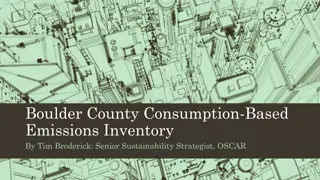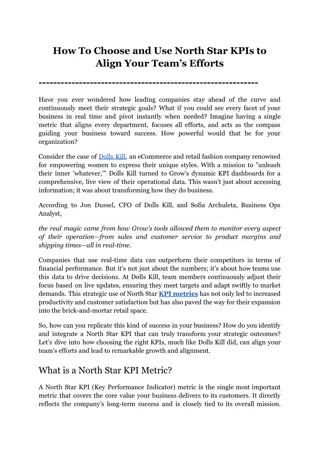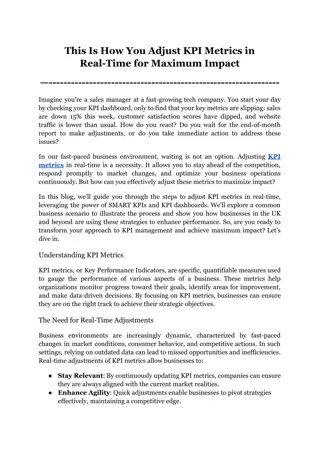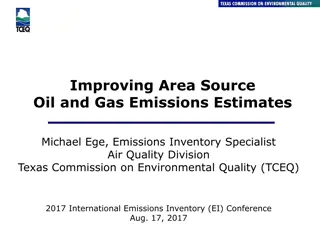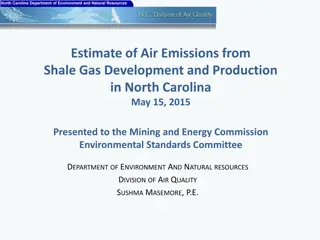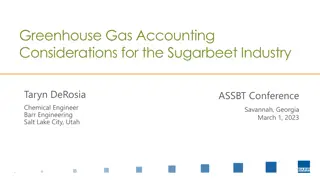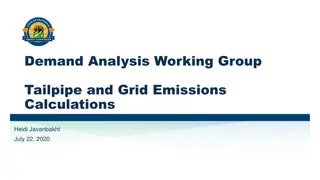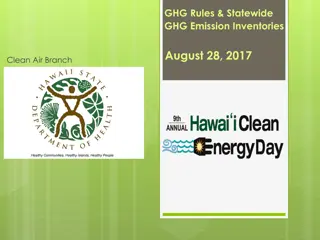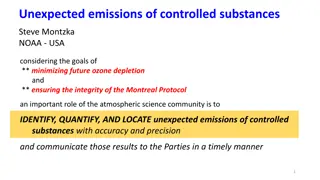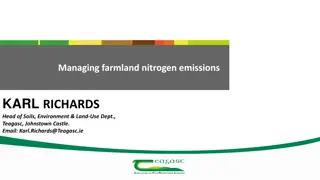
Minimizing Greenhouse Gas Emissions in Building Operations
The training module focuses on the assessment and methodology of total greenhouse gas (GHG) emissions from primary energy used in building operations. It covers the importance of reducing GHG emissions, defines Global Warming Potential (GWP), and provides a detailed assessment methodology for estimating CO2 equivalent emissions per useful internal floor area per year. The content includes guidelines on calculating emissions related to building operations and emphasizes the significance of minimizing GHG emissions to mitigate global warming and climate change.
Download Presentation

Please find below an Image/Link to download the presentation.
The content on the website is provided AS IS for your information and personal use only. It may not be sold, licensed, or shared on other websites without obtaining consent from the author. If you encounter any issues during the download, it is possible that the publisher has removed the file from their server.
You are allowed to download the files provided on this website for personal or commercial use, subject to the condition that they are used lawfully. All files are the property of their respective owners.
The content on the website is provided AS IS for your information and personal use only. It may not be sold, licensed, or shared on other websites without obtaining consent from the author.
E N D
Presentation Transcript
Training module 8 USE of the contextualized CESBA MED SNTool Urban Scale WP4 - ACTIVITY 4.2: CESBA MED TRAINING SYSTEM DELIVERABLE 4.2.1
D.1.2 - TOTAL GHG EMISSIONS FROM PRIMARY ENERGY USED IN BUILDING OPERATIONS D.1.2 - TOTAL GHG EMISSIONS FROM PRIMARY ENERGY USED IN BUILDING OPERATIONS ISSUE D. Atmospheric emissions CATEGORY D.1 Atmospheric emissions TRAINING MODULE 8 USE OF THE CONTEXTUALIZED CESBA MED SNTOOL URBAN SCALE 2
D.1.2 - TOTAL GHG EMISSIONS FROM PRIMARY ENERGY USED IN BUILDING OPERATIONS INTENT To minimise the total greenhouse gas emissions from buildings operations. TRAINING MODULE 8 USE OF THE CONTEXTUALIZED CESBA MED SNTOOL URBAN SCALE 3
D.1.2 - TOTAL GHG EMISSIONS FROM PRIMARY ENERGY USED IN BUILDING OPERATIONS ASSESSMENT METHODOLOGY - DESCRIPTION The criterion measures the contribution of the greenhouse gas (GHG) emissions associated with the building s operational phase on the earth's global warming or climate change. The Global Warming Potential (GWP) was developed to allow for the comparison of the impact on global warming caused by different gases. Specifically, it is a relative measure of how much energy can be trapped in the atmosphere over a set time horizon by a mass of gas in comparison with the same mass of carbon dioxide (CO2). A higher GWP means a larger warming effect in that period of time. TRAINING MODULE 8 USE OF THE CONTEXTUALIZED CESBA MED SNTOOL URBAN SCALE 4
D.1.2 - TOTAL GHG EMISSIONS FROM PRIMARY ENERGY USED IN BUILDING OPERATIONS ASSESSMENT METHODOLOGY DATA REQUIREMENT Indicator Unit Data source kg CO2eq./m2/yr CO2 equivalent emissions per useful internal floor area per year Estimation TRAINING MODULE 8 USE OF THE CONTEXTUALIZED CESBA MED SNTOOL URBAN SCALE 5
D.1.2 - TOTAL GHG EMISSIONS FROM PRIMARY ENERGY USED IN BUILDING OPERATIONS ASSESSMENT METHOD Step 1 Calculate the emissions of CO2 eq. related to building operations (heating, cooling, domestic hot water, ventilation, auxiliaries, lighting) for each buildingin the area (residential and non-residential buildings) with the following formula: ? = (?fuel,? ???? ?em,?) + (?el ?em,el) + (?dh ?em,dh) Qfuel,i Qel Qdh = annual quantity of i-th fuel [m3/a or kg/a] = annual quantity of electric energy from the grid [kWh/a] = annual quantity of energy from district heating/cooling [kWh/a] = lower heating value of the i-th fuel [kWh/m3 or kWh/kg] = CO2 eq. emission factor of the i-th fuel [kg CO2/kWh] = CO2 eq. emission factor of the electric energy from the grid [kg CO2/kWh] = CO2 eq. emission factor of energy from district heating/cooling [kg CO2/kWh] LHVi kem,i kem,el kem,dh TRAINING MODULE 8 USE OF THE CONTEXTUALIZED CESBA MED SNTOOL URBAN SCALE 6
D.1.2 - TOTAL GHG EMISSIONS FROM PRIMARY ENERGY USED IN BUILDING OPERATIONS ASSESSMENT METHOD Step 2 Calculate the aggregated annual total CO2 equivalent emissions from all buildings / total useful internal floor area of all buildings TRAINING MODULE 8 USE OF THE CONTEXTUALIZED CESBA MED SNTOOL URBAN SCALE 7
D.1.2 - TOTAL GHG EMISSIONS FROM PRIMARY ENERGY USED IN BUILDING OPERATIONS ASSESSMENT METHOD Step 1 Calculate the emissions of CO2 eq. related to building operations (heating, cooling, domestic hot water, ventilation, auxiliaries, lighting) for each buildingin the area (residential and non-residential buildings) with the following formula: ? = (?fuel,? ???? ?em,?) + (?el ?em,el) + (?dh ?em,dh) For each building in the local area separately: A. Pick up the data about fuel consumption separately for each fuel type for building operations as described in C.1.1 - TOTAL FINAL THERMAL ENERGY CONSUMPTION FOR BUILDING OPERATIONS expressed either in unit of fuel [m3/a or kg/a] or in [kWh/a], B. If the data about fuel consumption (Step A.) are expressed in unit of fuel [m3/a or kg/a], for each i-th fuel multiply the quantity of fuel Qfuel,i[m3/a or kg/a] with the appropriate lower heating value LHVi [kWh/m3 or kWh/kg] and with the appropriate CO2 eq. emission factor of the i-th fuel kem,i: m3 a kWh m3 kg CO2 kWh kg CO2 a TRAINING MODULE 8 USE OF THE CONTEXTUALIZED CESBA MED SNTOOL URBAN SCALE (?fuel,? ???? ?em,?) e.g. for natural gas = 8
D.1.2 - TOTAL GHG EMISSIONS FROM PRIMARY ENERGY USED IN BUILDING OPERATIONS ASSESSMENT METHOD C. If the data about fuel consumption (Step A.) are already expressed in unit of thermal energy ?fuel,? ????[kWh/a], for each i-th fuel multiply the quantity of fuel thermal energy ?fuel,? ???? in [kWh/a] with the appropriate CO2 eq. emission factor of the i-th fuel kem,i: kWh a kg CO2 kWh kg CO2 a (?fuel,? ???? ?em,?) = D. Pick up the data about total final non-renewable electric energy consumption ?elfrom the grid [kWh/a] for building operations as described in C.1.4 - TOTAL FINAL ELECTRIC ENERGY CONSUMPTION FOR BUILDING OPERATIONS E. Multiply the total final ?el from the grid in [kWh/a](Step D.) with the appropriate CO2 eq. emission factor of the electric energy from the grid kem,el [kg CO2/kWh]: non-renewable electric energy kWh a kg CO2 kWh kg CO2 a (?el ?em,el) = TRAINING MODULE 8 USE OF THE CONTEXTUALIZED CESBA MED SNTOOL URBAN SCALE 9
D.1.2 - TOTAL GHG EMISSIONS FROM PRIMARY ENERGY USED IN BUILDING OPERATIONS ASSESSMENT METHOD F. Pick up the data about energy from district heating/cooling Qdh [kWh/a] for building operations as described in C.1.1 - TOTAL FINAL THERMAL ENERGY CONSUMPTION FOR BUILDING OPERATIONS G. Multiply the quantity of energy from district heating/cooling Qdh [kWh/a] (Step F.) with the appropriate CO2 eq. emission factor of the electric energy from the grid kem,dh [kg CO2/kWh]: kWh a kg CO2 kWh kg CO2 a ?dh ?em,dh = TRAINING MODULE 8 USE OF THE CONTEXTUALIZED CESBA MED SNTOOL URBAN SCALE 10
D.1.2 - TOTAL GHG EMISSIONS FROM PRIMARY ENERGY USED IN BUILDING OPERATIONS ASSESSMENT METHOD Step 2 Calculate the aggregated annual total CO2 equivalent emissions from all buildings / total useful internal floor area of all buildings A. For each building sum up the calculated annual total CO2 equivalent emissions (Step 1. B or C + E + G) B. Sum up the aggregated annual total CO2 equivalent emissions for each building (A) the aggregated annual total CO2 equivalent emissions from all buildings [kg CO2/a] C. Sum up the useful internal floor area for each building the total useful internal floor area of all buildings [m2] D. Calculate (B/C) kg CO2 a m2 the aggregated annual total CO2 equivalent emissions from all buildings the total useful internal floor area of all buildings kg CO2 ?2 a = TRAINING MODULE 8 USE OF THE CONTEXTUALIZED CESBA MED SNTOOL URBAN SCALE 11
D.1.2 - TOTAL GHG EMISSIONS FROM PRIMARY ENERGY USED IN BUILDING OPERATIONS REFERENCES and STANDARDS energy ratings EN 15603 Energy performance of buildings Overall energy use and definition of TRAINING MODULE 8 USE OF THE CONTEXTUALIZED CESBA MED SNTOOL URBAN SCALE 12
D.1.2 - TOTAL GHG EMISSIONS FROM PRIMARY ENERGY USED IN BUILDING OPERATIONS EXAMPLE TRAINING MODULE 8 USE OF THE CONTEXTUALIZED CESBA MED SNTOOL URBAN SCALE 13
D.1.2 - TOTAL GHG EMISSIONS FROM PRIMARY ENERGY USED IN BUILDING OPERATIONS EXAMPLE Two public buildings in the area: 1. Office building using natural gas as a fuel for heating and electric energy for domestic hot water preparation, lighting and auxiliaries 2. Primary school using extra light fuel oil for heating and domestic hot water and electric energy for lighting and auxiliaries Calculate the aggregated annual total CO2 equivalent emissions from two buildings per total useful internal floor area per year? Input data are given in the following table: Office building 1.300,00 Primary school 1.510,00 extra light fuel oil litre 19.000,00 10,03 0,29957 Description Unit m2 Useful internal floor area Ak Fuel type natural gas m3 Unit of fuel Annual fuel consumption Lower heating value of fuel CO2 eq. emission factor of the fuel Annual consumption of electric energy from the grid CO2 eq. emission factor of the electric energy unit unit/a kWh/unit kg CO2/kWh Qfuel LHV kem 21.000,00 9,26 0,22020 Qel kWh/a 36.136,00 44.700,00 kem,el kg CO2/kWh 0,23481 0,23481 TRAINING MODULE 8 USE OF THE CONTEXTUALIZED CESBA MED SNTOOL URBAN SCALE 14
D.1.2 - TOTAL GHG EMISSIONS FROM PRIMARY ENERGY USED IN BUILDING OPERATIONS Office building Primary school Description Unit TOTAL m2 Useful internal floor area Ak 1.300,00 1.510,00 2.810,00 extra light fuel oil litre 19.000,00 10,03 0,29957 Fuel type natural gas m3 Unit of fuel Annual fuel consumption Lower heating value of fuel CO2 eq. emission factor of the fuel Annual consumption of electric energy from the grid CO2 eq. emission factor of the electric energy unit unit/a kWh/unit kg CO2/kWh Qfuel LHV kem 21.000,00 9,26 0,22020 Qel kWh/a 36.136,00 44.700,00 kem,el kg CO2/kWh 0,23481 0,23481 Qfuel LHV kem kg CO2/a 42.820,09 57.089,05 FUEL - annual CO2 emissions ELECTRIC ENERGY - annual CO2 emissions Aggregated annual total CO2 equivalent emissions Aggregated annual total CO2 equivalent emissions / useful inernal floor area Qel kel kg CO2/a 8.485,09 10.496,01 Qfuel LHV kem+ Qel kel kg CO2/a 51.305,19 67.585,06 118.890,25 (Qfuel LHV kem + Qel kel ) / Ak kg CO2/(m2a) 39,47 44,76 42,31 TRAINING MODULE 8 USE OF THE CONTEXTUALIZED CESBA MED SNTOOL URBAN SCALE The aggregated annual total CO2 equivalent emissions from two buildings per total useful internal floor area per year is 42,31 kg CO2/(m2a). 15
D.1.2 - TOTAL GHG EMISSIONS FROM PRIMARY ENERGY USED IN BUILDING OPERATIONS EXERCISE TRAINING MODULE 8 USE OF THE CONTEXTUALIZED CESBA MED SNTOOL URBAN SCALE 16
D.1.2 - TOTAL GHG EMISSIONS FROM PRIMARY ENERGY USED IN BUILDING OPERATIONS EXERCISE Three public buildings in the area: 1. Secondary school using natural gas as a fuel for heating and domestic hot water preparation and electric energy for lighting and auxiliaries 2. Office building using district heat for heating and domestic hot water and electric energy for lighting and auxiliaries 3. Hospital using extra light fuel oil for heating and domestic hot water and electric energy for lighting and auxiliaries Calculate the aggregated annual total CO2 equivalent emissions from three buildings per total useful internal floor area per year? Input data are given in the following table: Secondary school 6.303,00 natural gas district heating extra light fuel oil m3 kWh 88.573,00 341.666,00 9,26 0,22020 0,35133 Office building 2.824,00 Description Unit Hospital m2 unit unit/a kWh/unit kg CO2/kWh Useful internal floor area Fuel type Unit of fuel Annual fuel consumption Lower heating value of fuel CO2 eq. emission factor of the fuel Ak 1.408,00 litre Qfuel LHV kem 56.502,00 10,03 0,29957 Annual consumption of electric energy from the grid CO2 eq. emission factor of the electric energy Qel kWh/a 102.460,00 83.500,00 120.734,00 TRAINING MODULE 8 USE OF THE CONTEXTUALIZED CESBA MED SNTOOL URBAN SCALE kem,el kg CO2/kWh 0,23481 0,23481 0,23481 17







